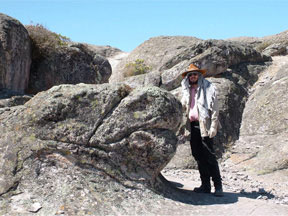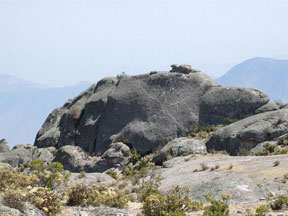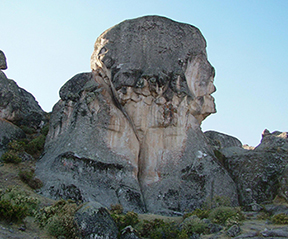
Markawasi, Peru
The Markawasi (Marcahuasi) Plateau is located high in the Andes Mountains, and it is truly a very special site. Indeed, and I do not use the term lightly, I regard it as a holy, sacred site. To best experience the majesty and power of Markawasi, one hikes or rides on horseback or donkey to the top of the summit (there is in fact no other way to get there), and then sets up camp. It is an area to explore, and take in, letting the energy of the land envelope you and permeate your very being. The stillness, the desolate beauty, the high altitude, the towering rock formations, all combine to produce a rejuvenating and vitalizing effect.
Markawasi may have been rediscovered in modern times (beginning in the mid-twentieth century), but based on the archaeological remains found there, people have been making the climb to the summit for hundreds, and perhaps thousands, of years. Why? What is the attraction? Simply the raw beauty of nature, or something more?
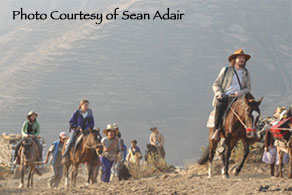
At Markawasi are found a number of enigmatic stone formations. They seem to represent a variety of animals and humans, such as a giant human head (third photograph), a turtle (fourth photo; the turtle’s head is on the right), or the head of a giant iguana-like lizard (fifth photo; that is me standing next to it for scale). Are these true, artificial, human-made forms carved from the bedrock? Some researchers believe such is the case, but that they are very, very ancient, indeed incredibly ancient (perhaps even tens of thousands of years old), and represent a long-lost and otherwise unknown advanced civilization. At this point, being so ancient, the sculptures are heavily weathered and eroded and thus have begun to blend back into the natural landscape.
Others viewing the same formations have concluded that they are simulacra, that is, simply natural features that vaguely take on anthropomorphic and zoomorphic forms. This is analogous to looking at natural cloud formations and seeing animals in the sky, or looking at star patterns and distinguishing intricate constellations. But I would point out that even if the Markawasi “sculptures” are merely simulacra, they have apparently been admired and venerated for many thousands of years. Even ancient peoples found meanings in their forms.
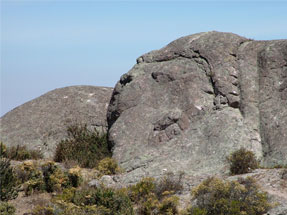
This brings me to an important point. I do not believe that the questions revolving around whether the Markawasi sculptures are human-made or natural, or perhaps a bit of both, are even of prime importance. What is really unique about the site is the effect it has on the perceptive visitor. Without exaggerating, Markwasi is a site that appears to enhance our normal cognitive abilities. It clears and opens the mind. Many people find genuine healing, both physical and psychological, upon visiting Markawasi. There are a number of reports of enhanced psychical abilities among those who travel to the plateau. Having experienced the effects of its wonders first-hand, I am convinced that Markawasi is a very special place.
